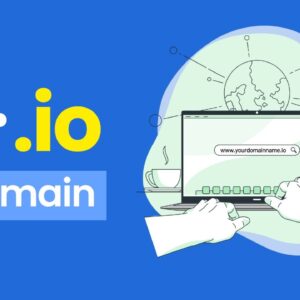I’d been working in email marketing for quite a while before I took on my first B2B campaign. Of course, I knew that B2B campaigns needed to be handled differently than my usual consumer outreach, and I thought I’d made the necessary tweaks.
What I didn’t realize is that minor tweaks to generalized email marketing tactics aren’t enough to create a successful B2B campaign. If you’re a beginner learning the ropes or a veteran B2C marketer making the shift, trying to work with anything other than a purpose-built B2B marketing strategy is a recipe for disaster.
I learned from my B2B blunder, and in an effort to save other marketers from similar mistakes, I’ve put together a guide to building a tailored B2B email marketing strategy.
Contents:
- What is B2B email marketing
- Why B2B emails require B2B strategies
- 7 key strategies for designing a B2B email campaign
- Best practices for B2B emails
- 7 B2B marketing email examples that stick the landing
What is B2B email marketing?
B2B email marketing is a tactic for promoting products or services to business-to-business customers. At its core, the goal is to nurture relationships with potential customers, build brand awareness, and generate sales. Successful strategies involve distributing newsletters, promotional offers, product updates, or free tools—all hyper-tailored to the needs and interests of the recipient.
When done right, B2B email marketing provides valuable information that encourages the recipient to make a purchase or take another desired action to move through the marketing funnel.
Why B2B emails require B2B strategies
General email marketing tactics don’t work for B2B campaigns for the same reason two nearly identical doors still require different keys: you’re trying to get different people in the door. Here are a few specific ways in which general email marketing tactics fail when employed on B2B campaigns.
Email targeting
Most email marketing campaigns target individuals, but B2B campaigns target companies—or rather, multiple individuals at a company. Whereas an individual getting a B2C email is responsible for every stage of their own buying journey, a company’s purchasing process involves people in all sorts of roles.
When you identify a B2B target, you’re really identifying a group of targets—and your B2B online marketing strategy needs to account for the differences among multiple contacts within a company.
What this means in practice: To reach people effectively, you need to be sending different emails to different individuals within the same target company.
Cycle length
Buying something on your own doesn’t take very long. To paraphrase one of my favorite Ariana Grande songs: you see it, you like it, you want it, you got it. Easy. (In my case, there’s usually also a “you check your bank balance” somewhere in there, but that’s a bit of a mouthful for a pop lyric.)
For a company, on the other hand, the purchasing process can be a lot like herding cats. Getting multiple departments to coordinate on a decision, especially one that requires a budget approval, takes a Herculean effort—and Herculean patience.
What this means in practice: Since email marketing campaigns last the length of the customer journey, expect your marketing cycles for B2B companies to take a lot more time.
Automate your email marketing
For a company, on the other hand, the purchasing process can be a lot like herding cats. Getting multiple departments to coordinate on a decision, especially one that requires a budget approval, takes a Herculean effort—and Herculean patience.
What this means in practice: Since email marketing campaigns last the length of the customer journey, expect your marketing cycles for B2B companies to take a lot more time.
Email tone and content
Consumers know that they’re consumers, so when you’re writing B2C emails, you can be more obvious about the fact that you’re trying to make a sale. Content like promotions, discounts, and sale announcements fit in a B2C campaign but would feel strange in an email to a business.
B2B emails tend to perform better when they focus on providing information and resources. Educational content like trend reports, industry benchmarks, how-to guides, and webinar recordings help prove your brand’s value to a B2B subscriber.
What this means in practice: You’ll need to source entirely new content types and formats to use for your B2B campaigns—repurposing B2C content is out of the question.
7 key strategies for designing a B2B email campaign
You get it: B2C or generalized email strategies are a no-go for your B2B campaign. But telling you what tactics not to use without giving you any to replace them wouldn’t be very helpful of me, would it? Here’s how to nail your B2B email marketing campaign.
1. Profile your target customers
When targeting a particular B2B company, you’re really targeting that company’s buying center—the group of people who determine whether or not the company purchases your product.
The buying center includes six main roles:
- Initiators are the first people at a company who become introduced to and interested in your product.
- Users are the people who will use your product day-to-day once the company decides to make the purchase.
- Buyers are the people who handle the logistics and administrative aspects of a potential purchase, including budgeting, contract terms, renewals, etc.
- Deciders are the people who ultimately decide whether or not to approve the buyers to move forward with a purchase.
- Gatekeepers are the people (usually administrators) who control the flow of information to and from other members of the buying center.
Influencers is a catch-all group that encompasses anyone within an organization that influences the decisions and opinions of other members of the buying center. (In other words: everyone else at the company.)




